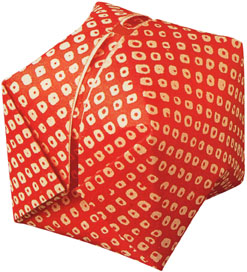Giorgio Giardina - Ph.D.
contacts |
Dep. of Biochemical Sciences "A. R. Fanelli" SAPIENZA University of Rome P.le A. Moro n.5 00185 - Rome - IT Tel. +39 06 49910713 Fax. +39 06 4440062 |
|||||||||||||||||||
present position |
| |||||||||||||||||||
academic background |
|
|||||||||||||||||||
solved structures |
|
|||||||||||||||||||
experience and skills |
|
|||||||||||||||||||
1 Fernicola S, Paiardini A, Giardina G, Rampioni G, Leoni L, Cutruzzolˆ F & Rinaldo S (2016) In Silico Discovery and In Vitro Validation of Catechol-Containing Sulfonohydrazide Compounds as Potent Inhibitors of the Diguanylate Cyclase PleD. J. Bacteriol. 198, 147–56. 2 Paiardini A, Giardina G, Rossignoli G, Borri Voltattorni C & Bertoldi M (2016) New insights emerging from recent investigations on human group II pyridoxal 5Õ-phosphate decarboxylases. Curr. Med. Chem. In Press. 3 Rinaldo S, Giardina G & Cutruzzola F (2016) CHAPTER 4 Nitrite Reductase - Cytochrome cd1. In Metalloenzymes in Denitrification: Applications and Environmental Impacts (Isabel M, Moura JJ, Pauleta SR, & Maia LB, eds), Metallobio, pp. 59–90. The Royal Society of Chemistry. 4 Rinaldo S, Giardina G, Mantoni F, Paiardini A, Paone A & Cutruzzol‡ F (2016) Discovering selective diguanylate cyclases inhibitors: from PleD to discrimination of the active site of cyclic-di-GMP phosphodiesterases. Methods Mol. Biol. In Press. 5 Fernicola S, Torquati I, Paiardini A, Giardina G, Rampioni G, Messina M, Leoni L, Del Bello F, Petrelli R, Rinaldo S, Cappellacci L & Cutruzzolˆ F (2015) Synthesis of Triazole-Linked Analogues of c-di-GMP and Their Interactions with Diguanylate Cyclase. J. Med. Chem. 58, 8269–8284. 6 Giardina G, Brunotti P, Fiascarelli A, Cicalini A, Costa MGS, Buckle AM, di Salvo ML, Giorgi A, Marani M, Paone A, Rinaldo S, Paiardini A, Contestabile R & Cutruzzolˆ F (2015) How pyridoxal 5Õ-phosphate differentially regulates human cytosolic and mitochondrial serine hydroxymethyltransferase oligomeric state. FEBS J. 282, 1225–1241. 7 Marani M, Paone A, Fiascarelli A, Macone A, Rinaldo S, Giardina G, Pontecorvi V, Koes D, Yang T, Paiardini A & Contestabile R (2015) A pyrazolopyran derivative preferentially inhibits the activity of human cytosolic hydroxymethyltransferase and induces cell death in lung cancer cells. Oncotarget 7, 4570–83. 8 Paiardini A, Fiascarelli A, Rinaldo S, Daidone F, Giardina G, Koes DR, Parroni A, Montini G, Marani M, Paone A, McDermott LA, Contestabile R & Cutruzzolˆ F (2015) Screening and In Vitro Testing of Antifolate Inhibitors of Human Cytosolic Serine Hydroxymethyltransferase. ChemMedChem 10, 490–497. 9 Rinaldo S, Paiardini A, Stelitano V, Brunotti P, Cervoni L, Fernicola S, Protano C, Vitali M, Cutruzzolˆ F & Giardina G (2015) The structural basis of functional diversification of HD-GYP domain revealed by the Pseudomonas aeruginosa PA4781 protein displaying an unselective bi-metallic binding site. J. Bacteriol. 197, 1525–1535. 10 Cutruzzolˆ F, Arcovito A, Giardina G, Della Longa S, DÕAngelo P & Rinaldo S (2014) Distal-proximal crosstalk in the heme binding pocket of the NO sensor DNR. Biometals 27, 763–773. 11 Paone A, Marani M, Fiascarelli A, Rinaldo S, Giardina G, Contestabile R, Paiardini A & Cutruzzolˆ F (2014) SHMT1 knockdown induces apoptosis in lung cancer cells by causing uracil misincorporation. Cell Death Dis. 5, e1525. 12 Rinaldo S, Giardina G & Cutruzzolˆ F (2014) Nitrosylation of c heme in cd1-nitrite reductase is enhanced during catalysis. Biochem. Biophys. Res. Commun. 451, 449–454. 13 Giardina G, Paiardini A, Fernicola S, Franceschini S, Rinaldo S, Stelitano V & Cutruzzolˆ F (2013) Investigating the Allosteric Regulation of YfiN from Pseudomonas aeruginosa: Clues from the Structure of the Catalytic Domain. PLoS One 8, e81324. 14 Giri R, Travaglini-Allocatelli C, Gianni S, Giardina G & Brunori M (2013) MORPHOGENESIS OF PROTEINS: CLASSIC VIEWS AND CHALLENGES AHEAD. J. Proteins Proteomics 4, 165–174. 15 Stelitano V, Brandt A, Fernicola S, Franceschini S, Giardina G, Pica A, Rinaldo S, Sica F & Cutruzzolˆ F (2013) Probing the activity of diguanylate cyclases and c-di-GMP phosphodiesterases in real-time by CD spectroscopy. Nucleic Acids Res. 41, e79. 16 Stelitano V, Giardina G, Paiardini A, Castiglione N, Cutruzzolˆ F & Rinaldo S (2013) C-di-GMP Hydrolysis by Pseudomonas aeruginosa HD-GYP Phosphodiesterases: Analysis of the Reaction Mechanism and Novel Roles for pGpG. PLoS One 8, e74920. 17 Boumis G, Giardina G, Angelucci F, Bellelli A, Brunori M, Dimastrogiovanni D, Saccoccia F & Miele AE (2012) Crystal structure of Plasmodium falciparum thioredoxin reductase, a validated drug target. Biochem. Biophys. Res. Commun. 425, 806–11. 18 Castiglione N, Rinaldo S, Giardina G, Stelitano V & Cutruzzolˆ F (2012) Nitrite and nitrite reductases: from molecular mechanisms to significance in human health and disease. Antioxid. Redox Signal. 17, 684–716. 19 Daidone F, Montioli R, Paiardini A, Cellini B, Macchiarulo A, Giardina G, Bossa F & Borri Voltattorni C (2012) Identification by virtual screening and in vitro testing of human DOPA decarboxylase inhibitors. PLoS One 7, e31610. 20 Rinaldo S, Castiglione N, Giardina G, Caruso M, Arcovito A, Longa S Della, DÕAngelo P & Cutruzzolˆ F (2012) Unusual heme binding properties of the dissimilative nitrate respiration regulator, a bacterial nitric oxide sensor. Antioxid. Redox Signal. 17, 1178–89. 21 Castiglione N, Stelitano V, Rinaldo S, Giardina G & Caruso M (2011) Metabolism of cyclic-di-GMP in bacterial biofilms : From a general overview to biotechnological applications. Indian J. Biotechnol. 10, 423–431. 22 Giardina G, Castiglione N, Caruso M, Cutruzzolˆ F & Rinaldo S (2011) The Pseudomonas aeruginosa DNR transcription factor: light and shade of nitric oxide-sensing mechanisms. Biochem. Soc. Trans. 39, 294–8. 23 Giardina G, Montioli R, Gianni S, Cellini B, Paiardini A, Voltattorni CB & Cutruzzolˆ F (2011) Open conformation of human DOPA decarboxylase reveals the mechanism of PLP addition to Group II decarboxylases. Proc. Natl. Acad. Sci. U. S. A. 108, 20514–9. 24 Rinaldo S, Giardina G, Castiglione N, Stelitano V & Cutruzzolˆ F (2011) The catalytic mechanism of Pseudomonas aeruginosa cd1 nitrite reductase. Biochem. Soc. Trans. 39, 195–200. 25 Castiglione N, Rinaldo S, Giardina G & Cutruzzola F (2009) The transcription factor DNR from Pseudomonas aeruginosa specifically requires nitric oxide and haem for the activation of a target promoter in Escherichia coli. Microbiology 155, 2838–2844. 26 Cutruzzolˆ F, Rinaldo S, Castiglione N, Giardina G, Pecht I & Brunori M (2009) Nitrite reduction: a ubiquitous function from a pre-aerobic past. Bioessays 31, 885–91. 27 Giardina G, Rinaldo S, Castiglione N, Caruso M & Cutruzzolˆ F (2009) A dramatic conformational rearrangement is necessary for the activation of DNR from Pseudomonas aeruginosa. Crystal structure of wild-type DNR. Proteins 77, 174–80. 28 Longa S Della, Arcovito a, Brunori M, Castiglione N, Cutruzzolˆ F, DÕAngelo P, Giardina G & Rinaldo S (2009) XAS study of the active site of a bacterial heme-sensor. J. Phys. Conf. Ser. 190, 12202. 29 Giardina G, Rinaldo S, Johnson K a, Di Matteo A, Brunori M & Cutruzzolˆ F (2008) NO sensing in Pseudomonas aeruginosa: structure of the transcriptional regulator DNR. J. Mol. Biol. 378, 1002–15. 30 Rinaldo S, Arcovito A, Giardina G, Castiglione N, Brunori M & Cutruzzolˆ F (2008) New insights into the activity of Pseudomonas aeruginosa cd1 nitrite reductase. Biochem. Soc. Trans. 36, 1155–9. 31 Rinaldo S, Giardina G, Brunori M & Cutruzzolˆ F (2006) N-oxide sensing and denitrification: the DNR transcription factors. Biochem. Soc. Trans. 34, 185. 32 Micozzi A, Ottaviani M, Giardina G, Ricci A, Pizzoferrato R, Ziller T, Compagnone D & Lo?Sterzo C (2005) Use of the Pd-PromotedExtended One-Pot (EOP) Synthetic Protocol for the Modular Construction of Poly-(arylene ethynylene)co-Polymers [?Ar?C?C?Ar??C?C?]n, Opto- and Electro-Responsive Materials for Advanced Technology. Adv. Synth. Catal. 347, 143–160. 33 Rinaldo S, Giardina G & Brunori M (2005) expression and preliminary characterization of DNR , an FNR – CRP type transcriptional regulator. Biochem. Soc. Trans. 33, 184–186. 34 Rinaldo S, Giardina G, Brunori M & Cutruzzolˆ F (2005) N-oxide sensing in Pseudomonas aeruginosa: Expression and preliminary characterization of DNR, an FNR-CRP type transcriptional regulator. Biochem. Soc. Trans. 33, 184–186. 35 Altamura P, Giardina G, Lo Sterzo C & Russo M V (2001) Use of the extended one-pot (EOP) procedure for the preparation of ethynylated thiophene derivatives and related palladium-ethynylthiophene organometallic oligomers. Organometallics 20, 4360–4368. 36 Giardina G, Rosi P, Ricci A & Lo Sterzo C (2000) Efficient one-pot access to poly(arylene ethynylene) homopolymers: use of the Bu3Sn - moiety as a recyclable carrier to introduce the ethynyl unit into the chain. J. Polym. Sci. Part A Polym. Chem. 38, 2603–2621.
| ||||||||||||||||||||
| back to the top | web-design Giorgio Giardina | |||||||||||||||||||






